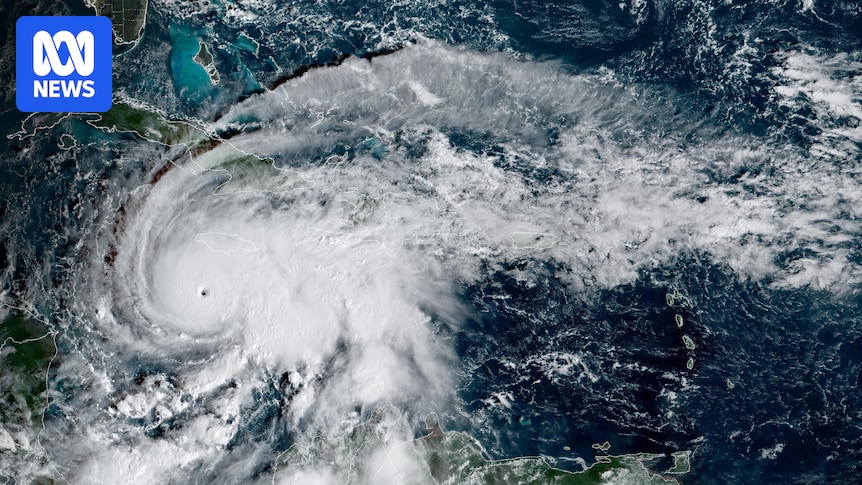
By Thomas Morgan
Hurricane Melissa, a Category 5 storm, has made a historic landfall on the coast of Jamaica, unleashing wind gusts reaching up to 300 kilometers per hour. Authorities are bracing for widespread devastation as the storm threatens to cause catastrophic flash flooding and landslides across the island nation. The Red Cross has warned that up to 1.5 million people could be impacted by this formidable natural disaster.
The storm, fueled by the warm waters of the Caribbean, is expected to bring storm surges up to four meters and rainfall totals of 700 millimeters, exacerbating fears of severe flooding. The US National Hurricane Center has confirmed that this is one of the most powerful hurricane landfalls on record in the Atlantic basin, marking a significant moment in meteorological history.
Unprecedented Power Outages and Damage
As the hurricane’s ferocious winds and rain continue to batter Jamaica, hundreds of thousands of residents are already experiencing power outages. These disruptions began even before the storm officially made landfall, as Hurricane Melissa’s outer bands lashed the island. Reports from multiple news organizations, including Reuters, indicate that the storm was approximately 55 kilometers southeast of Negril, packing sustained winds of 295 kilometers per hour.
Meanwhile, the Cooperative Institute for Research in the Atmosphere (CIRA) has been providing real-time satellite imagery of the storm, showcasing its immense size and strength. These images reveal a well-defined eye, a characteristic feature of high-intensity hurricanes.
Historical Context and Comparisons
Hurricane Melissa’s impact is being compared to past hurricanes that have wreaked havoc in the Caribbean. The storm is being described as the strongest to hit Jamaica since records began 174 years ago. Historically, hurricanes such as Katrina in 2005 and Irma in 2017 have left indelible marks on the region, but Melissa’s unprecedented strength sets it apart.
According to meteorologists, this storm is the most powerful of the 2025 hurricane season, a testament to the increasing frequency and intensity of such weather events in recent years. The implications of climate change are becoming more evident, with warmer ocean temperatures contributing to the formation of more potent storms.
Humanitarian Efforts and Government Response
In response to the storm, Jamaica’s local government minister, Desmond McKenzie, has urged residents to seek shelter, emphasizing the severity of the situation. “Jamaica, this is not the time to be brave,” he stated, highlighting the urgency of utilizing the country’s 880 shelter facilities, many of which remain underutilized.
Efforts are underway to provide aid and support to those affected. International organizations, including the Red Cross and various United Nations agencies, are coordinating with local authorities to address immediate needs and plan for long-term recovery efforts.
“There is still a small window of opportunity,” McKenzie said. “Let us see if we can use it wisely.”
Looking Ahead: Recovery and Resilience
The aftermath of Hurricane Melissa will undoubtedly pose significant challenges for Jamaica. As the storm continues its path through the Caribbean, the focus will shift to recovery and rebuilding efforts. The resilience of the Jamaican people will be tested, but the spirit of community and cooperation will play a crucial role in overcoming the devastation.
Experts emphasize the importance of learning from this event to improve preparedness and response strategies for future hurricanes. The increasing intensity of these storms underscores the need for robust infrastructure and effective emergency management systems.
As the world watches the unfolding situation in Jamaica, the global community stands ready to offer support and solidarity in the face of this natural disaster.





